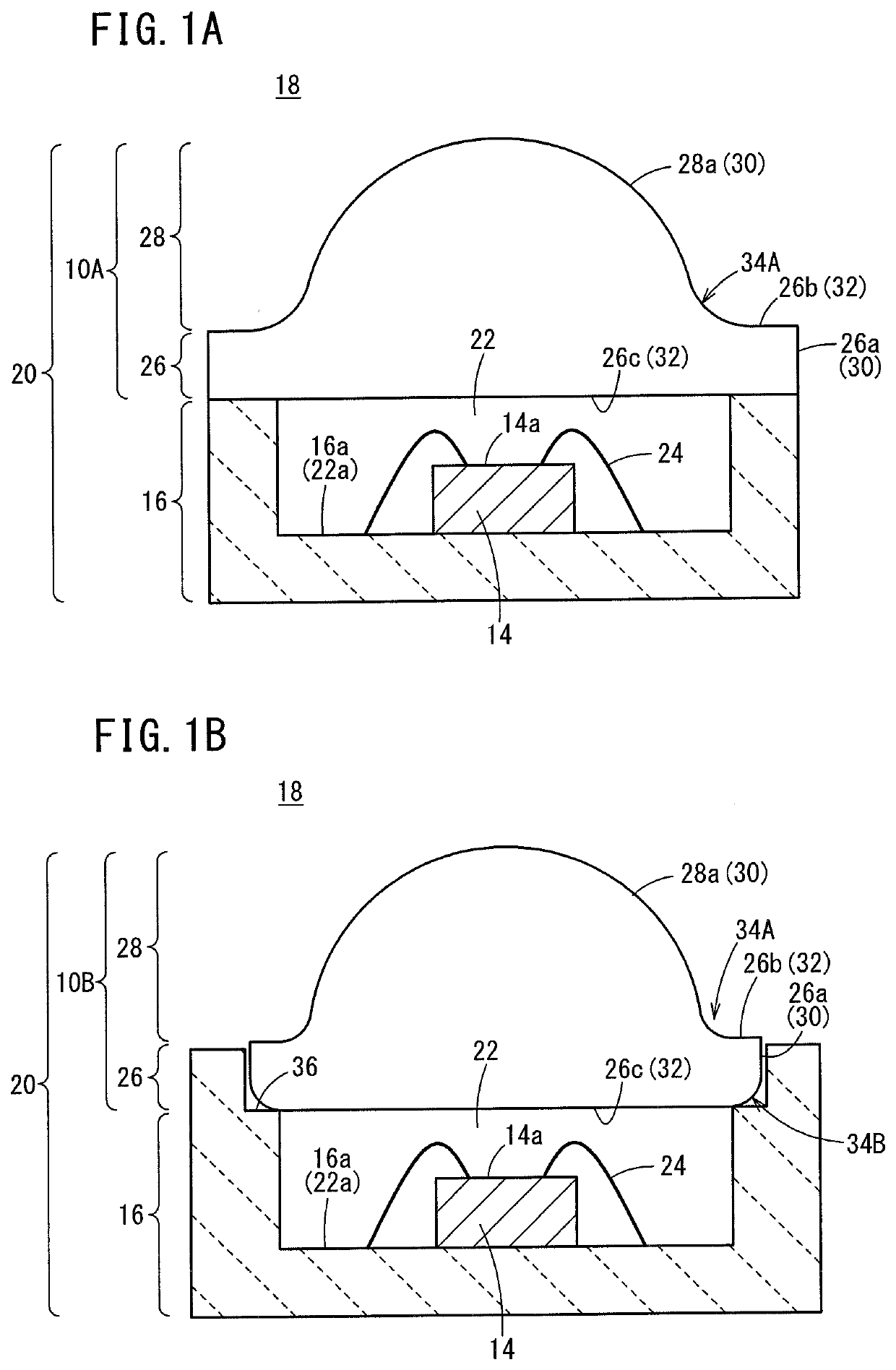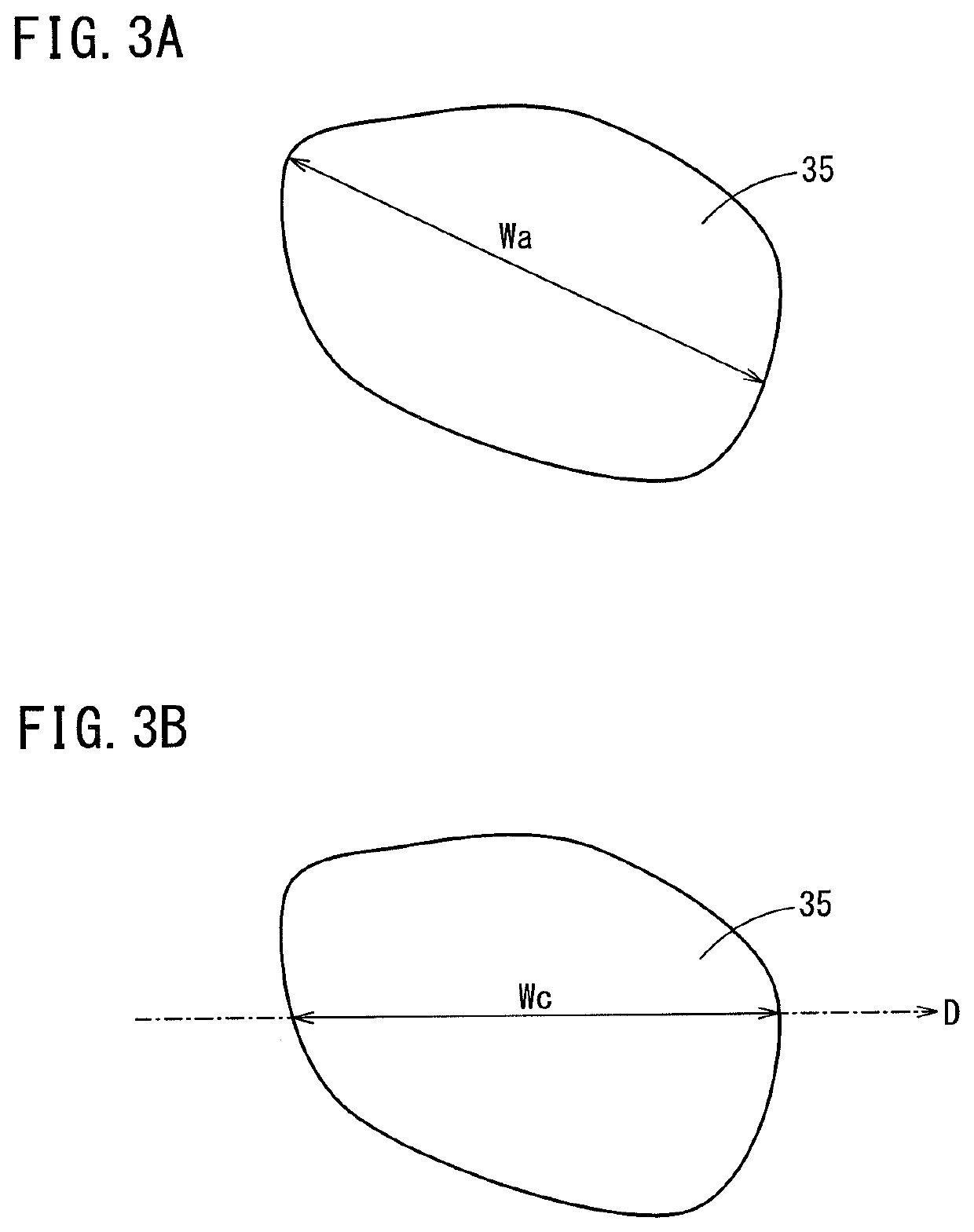Transparent sealing member and method for manufacturing same
- Summary
- Abstract
- Description
- Claims
- Application Information
AI Technical Summary
Benefits of technology
Problems solved by technology
Method used
Image
Examples
first exemplary embodiment
[0090]In the first exemplary embodiment, regarding Exemplary Embodiments 1, 2, and 3 and Comparative Examples 1, 2, and 3, the transparent sealing member 10 was subjected to brazing and bonded onto the mounting substrate 16, and thereafter, after having been cooled, the rate at which cracking is generated in the transparent sealing member 10 was confirmed.
[0091]The mounting substrate 16 is made of AlN (aluminum nitride) and has a box shape with an upper surface opening. Both the vertical and horizontal lengths of the mounting substrate 16 were 5.0 mm, and a light emitting diode having an emission wavelength of 280 nm was mounted as the optical element 14 on the mounting surface 16a.
exemplary embodiment 1
[0092]The transparent sealing member 10 according to Exemplary Embodiment 1 has a configuration similar to that of the first transparent sealing member 10A shown in FIG. 1A.
[0093]The method of manufacturing the transparent sealing member 10 according to Exemplary Embodiment 1 is as described below. More specifically, a slurry was prepared by mixing 100 parts by mass of a silica powder having an average particle diameter of 0.5 μm as a raw material powder, 2 parts by mass of a carboxylic acid copolymer as a dispersing agent, 49 parts by mass of dimethyl malonate as a dispersing medium, 4 parts by mass of ethylene glycol, 4 parts by mass of 4′4-diphenylmethane diisocyanate as a curing agent, and 0.4 parts by mass of triethylamine as a catalyst.
[0094]The slurry was poured into a metal mold at room temperature, and left at room temperature for a fixed time period. Subsequently, the molded body was released from the mold. Furthermore, the molded body was allowed to stand at room temperat...
exemplary embodiment 2
[0098]A silica powder molded body, which was manufactured by the same manufacturing method as in Exemplary Embodiment 1, was calcined at 500° C. in the atmosphere, and thereafter fired in a hydrogen atmosphere at a temperature 10° C. lower than in Exemplary Embodiment 1, thereby producing the transparent sealing member 10. Stated otherwise, the transparent sealing member 10 of Exemplary Embodiment 2 was manufactured by the same method as in Exemplary Embodiment 1, except that it was fired in the hydrogen atmosphere at a 10° C.-lower firing temperature. In Exemplary Embodiment 2, one hundred transparent sealing members 10, in which the radius of curvature of the curved shape formed in the first corner portion 34A was greater than or equal to 150 μm and less than 300 μm, were produced. Thereafter, one hundred optical components according to Exemplary Embodiment 2 were produced in the same manner as in Exemplary Embodiment 1.
PUM
 Login to View More
Login to View More Abstract
Description
Claims
Application Information
 Login to View More
Login to View More - R&D
- Intellectual Property
- Life Sciences
- Materials
- Tech Scout
- Unparalleled Data Quality
- Higher Quality Content
- 60% Fewer Hallucinations
Browse by: Latest US Patents, China's latest patents, Technical Efficacy Thesaurus, Application Domain, Technology Topic, Popular Technical Reports.
© 2025 PatSnap. All rights reserved.Legal|Privacy policy|Modern Slavery Act Transparency Statement|Sitemap|About US| Contact US: help@patsnap.com



